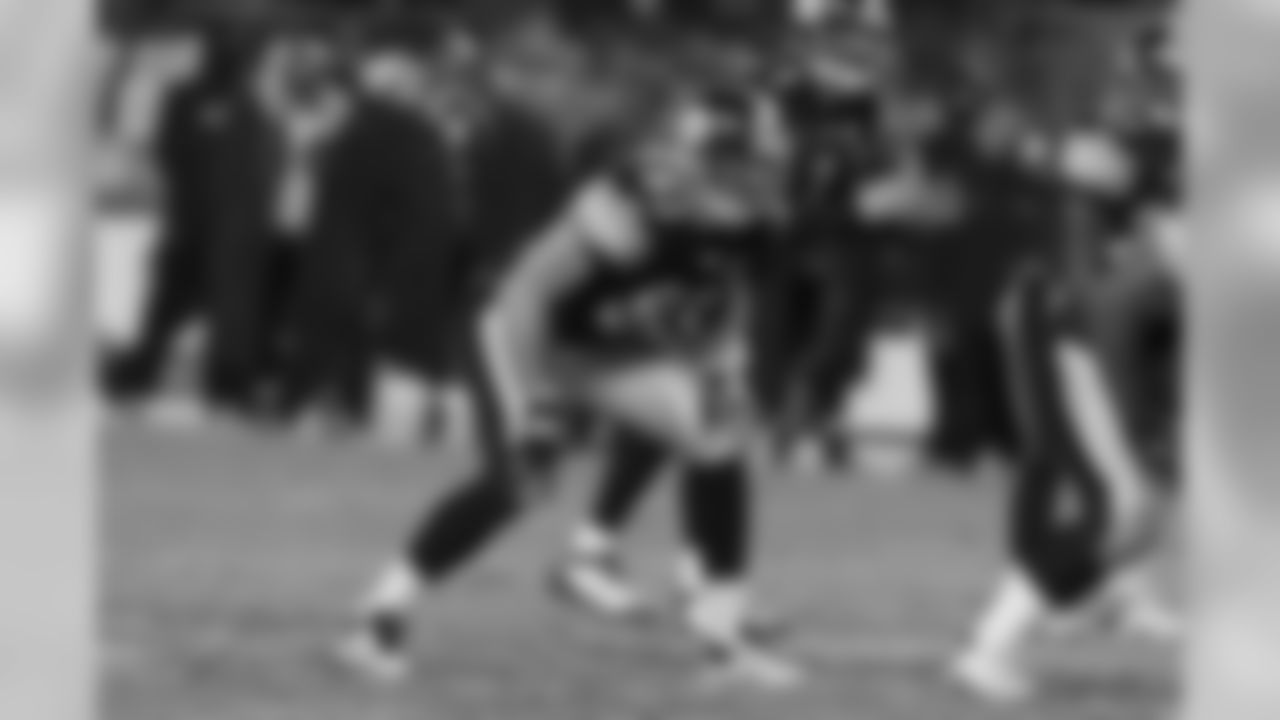INDIANAPOLIS – Let's get to it:
BRANDON LATTANZI FROM STRATFORD, CT:
What's more probable, addressing the tight end situation through free agency or the draft? Also, do you think the Steelers would stick to blocking as a No. 1 priority, or a vertical threat that could make this scary offense downright nightmarish?
ANSWER: My thinking on this has changed in light of Ben Roethlisberger's decision to retire, because the need to add talent to this unit is more immediate. The Steelers still believe in running the football, and running the football successfully and efficiently in the NFL requires the tight end to be an effective blocker. I don't know about blocking being the No. 1 priority for the Steelers in deciding upon a tight end, but blocking is important to them and tight ends who block are becoming increasingly rare. My preference would be for the Steelers to address the tight end position for the short-term – say, the next couple of seasons – via free agency, but I'm writing that at a time where the list of available free agent tight ends hasn't been formalized, nor is there any certainty that a worthy candidate will be on that list and willing to sign for what the Steelers can offer. But a veteran holds more interest for me in this situation, because a veteran wouldn't have to be taught the intricacies of the blocking that will need to be done.
As for the concept of the Steelers adding a dynamic receiving tight end, I see that as potentially damaging the explosiveness of the offense. There's only one football, and the Steelers already have Antonio Brown, Martavis Bryant, and Le'Veon Bell, plus Sammie Coates possibly ready to blossom, and each of those individuals is dynamic is his own right. I see the tight end in the Steelers offense – with this current group of personnel – as being more of a complementary weapon than a primary one.
As to the opinion to use a premium draft pick this year on a tight end, if there is some certainty that the Steelers have a chance to pick a 2005 version of Heath Miller when their turn comes in the first or second rounds, then they should do it. And I don't mean pick a guy who maybe has the potential to develop into something resembling what Heath Miller was. I mean it has to be sure thing. Another Heath Miller. In every way. If he's not, then there are too many other areas of the roster to be fortified, and tight end isn't a prominent enough position to leap-frog those draft-day needs. My opinion.
JOE GRESICK FROM WILMINGTON, NC:
I've noticed some players in the draft class are being talked about for multiple positions, such as a guy could play cornerback or safety. How do teams decide where to play guys like him? Body type, scheme fit, position needs?
ANSWER: Most often the kinds of position switches to which you refer – cornerback to safety, offensive tackle to guard, often seen by NFL people as position flexibility – typically happen only because of the individual athlete's skill-set as it's projected into professional football. These aren't the only reasons for switches, but let's say a college cornerback doesn't run particularly fast, then he could be judged a good candidate for a switch to safety. Or a college offensive tackle might not have the athletic ability, quick feet, and size to be judged capable of handling the edge-rushers in the NFL, and so he might become a candidate to be moved to guard.
BILL JANUS FROM HAINESPORT, NJ:
I just saw that Kevin Colbert said they were going to treat Senquez Golson as a 2016 second-round pick. Mike Tomlin said that Senquez will be treated as a second-year player and will be expected to jump right into it. Which is it? I'm afraid everyone is not on the same page.
ANSWER: Which is it? It's both. Since Senquez Golson didn't play at all last season, General Manager Kevin Colbert said his addition to the mix in 2016 will be similar to that of a completely new player, because, you know, he didn't play at all last season. Not a single training camp practice. Since Senquez Golson was a part of training camp for a couple of weeks before having surgery and then was around the UPMC Rooney Sports Complex on a regular basis throughout the season, Coach Mike Tomlin in a completely separate interview on a different day said he's planning to view Golson as a second-year player who will be expected to "jump right into it."
TIM CUNNINGHAM FROM CLEVELAND OH:
Do you think Isaac Redman may return to NFL? I heard that he has been taking spinning classes with Bryant McFadden and looking for a job. He also applied for a boilerplate apprenticeship.
ANSWER: All due respect to Isaac Redman, but as a running back from Bowie State who ran a 4.76 in the 40-yard dash, he was a borderline NFL player when he was in his physical prime. He no longer is in his prime, because now he's 31 years old and has been out of the NFL since the Steelers cut him during the 2013 season. I believe Redman has a better chance getting a job by utilizing that "boilerplate apprenticeship" than he does of finding one as an NFL player.
BRIAN PILE FROM GOLETA, CA:
Why did it take so long for our past defensive coaches (Dick LeBeau) and present defensive coaches (Keith Butler) to determine whether a player can play in the scheme or not? Examples of this are Keenan Lewis, Cortez Allen, Anthony Chickillo, and Robert Golden, and what can they do better in the future to assess if a player can play in a more expeditious fashion?
ANSWER: First things first. In each of the instances you present, there were better alternatives at that time in those positions in the opinion of the coaching staff, and so the idea is to play the best player. As Mike Tomlin says, "It's a moving train." In the NFL, the successful teams don't spend time outside the preseason period in an effort to try to develop guys. The CBA really limits the offseason programs, then comes training camp and a preseason, which combined last about six calendar weeks. You either prove you can play in that window, or the train leaves the station without you. It's a brutal business, because a guy needs to show he can play before he gets a chance, and a guy sometimes needs a chance so he can figure out how to play. In three of those four instances – Lewis, Allen, and Thomas – minor injuries early prevented them from getting the practice repetitions they needed to break through. Coaches aren't going to put guys out there they think will get the team beat with mental errors, because then they get fired.
RANDY GRAVER FROM SPRINGFIELD, MO:
Just wanted to let you know what a great article you wrote about Heath Miller, I think you captured his life and work as well as could be done in short. Very much appreciated and well deserved for someone who was a class act and a role model for the entire NFL.
ANSWER: Thanks for the kind words. I was hoping what I had written had done justice to Heath Miller for everything he was as a player and as a human being.
AMY MAROTTA FROM JOHNSTOWN NY:
Wouldn't you rather spend money on one elite player rather than two mediocre players?
**
Take a journey through the career of Steelers TE Heath Miller.










































































































ANSWER: If it's my money, I'd rather spend it on a Bermuda vacation, but to answer your question, I'm going to tell you something Steelers Chairman Dan Rooney said to me back in 1992-93 as the salary cap system was being put together and implemented. He said that with a salary cap, it's not as punitive to overpay a superstar – because he's a superstar – than it is to overpay mediocre talent. Even if overpaying for mediocre talent is cheaper than overpaying for a superstar.**
CHRISTOPHER HEMANS FROM WESTERVILLE, OH:
Could you see the Steelers bringing back Brice McCain for 2016? He's not a big name guy, but he has played with the Steelers before and had a pretty good year in 2014. More veteran help to teach the younger cornerbacks.
ANSWER: I'm certain it will spark a conversation at least, but the Steelers didn't believe Brice McCain was worth the $5.5 million over two years that Miami offered last offseason, and so we'll have to see whether a mutually agreeable financial arrangement can be worked out.
DAN BUTOROVICH FROM BUTTE, MT:
Why have we never seen a scenario, like what happens in the NBA, where top free agents at multiple positions decide together to attempt to "stack" one team with talent by all signing cap-friendly contracts for substantially less money than they would have if they were selling to the highest bidder, in order to win a Super Bowl?
ANSWER: There are many reasons, but I'll just present you with a couple of them. It's not as easy in the NFL as it is in the NBA because of the number of players on the field/court at the same time. With five playing at a time in the NBA and with rosters set at 13 or 14 per team, it's not as difficult to assemble a Dream Team as it would be in the NFL where you need 11 on offense and 11 on defense with rosters at 53. Wait? Dream Team? Isn't that what the Eagles attempted some years ago and ended up finishing under .500? I believe it is. Anyway, the other reason is the $$$$$$. Players realize their prime earning years are limited, and it's not real business smart to forfeit some of that to chase a trophy. Cynical, I understand, but also realistic based on my experience.














